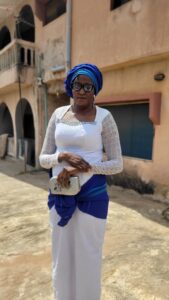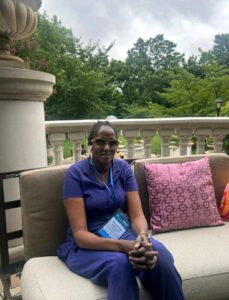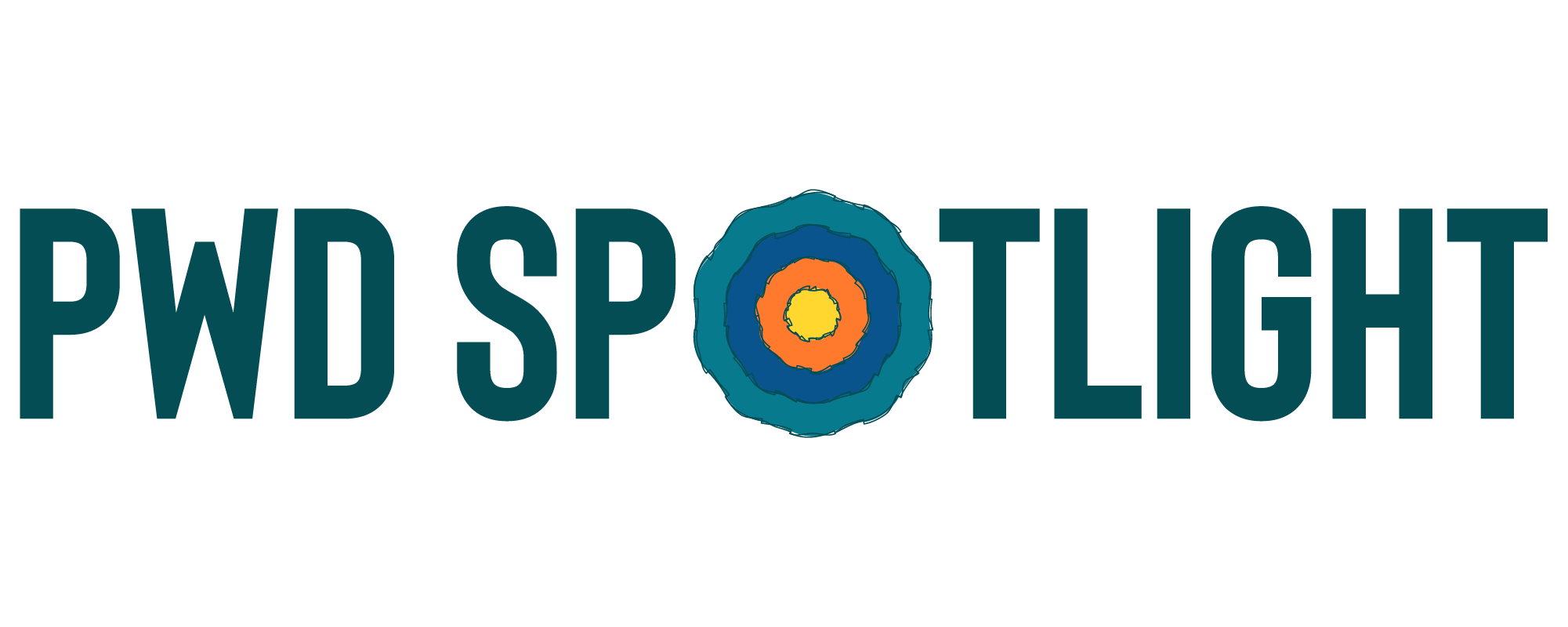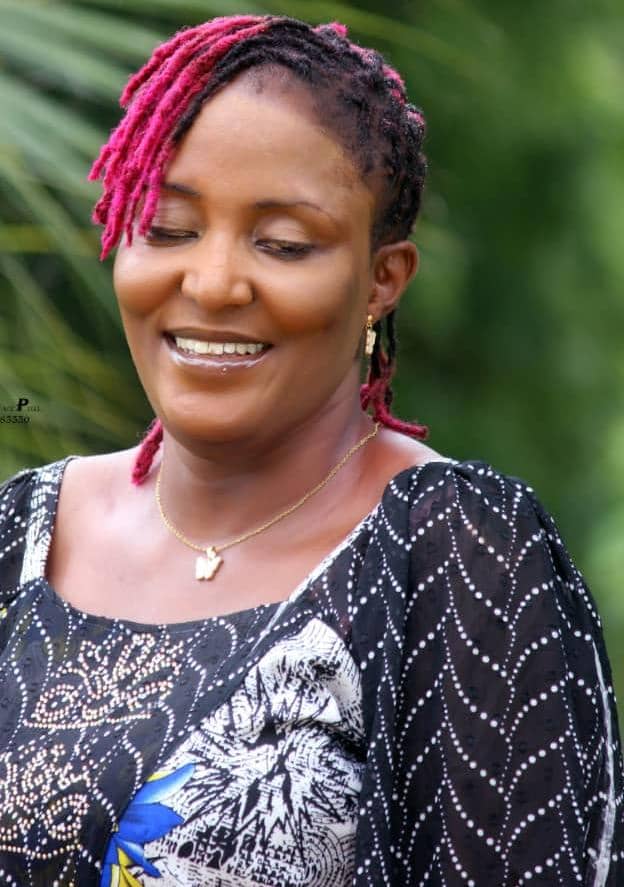In this interview, Adeyefa, a visually-impaired Journalist, mediapreneur and community leader, shares her experience navigating Nigeria’s discriminating media landscape, leading a community, being a language tutor, and establishing her own media outlet. She advocates improved support for the disability community.
Who is Oluwatomisin Adeyefa?
I am a journalist, a Mandela Washington Fellow, and the founder of the Beyond Limit Initiative (aka Purple Abilities) and The Diversity and Access Communications. I am also a Yoruba language tutor, a wife, and a mother.
My passion for this work stems from my lived experience as a visually impaired woman. My mission is to build institutions that use the power of media and storytelling to change the narrative on disability. I am deeply committed to empowering women and girls with disabilities to be seen, heard, and valued.
Can you share with us your Journalism journey?
My journalism journey began with a natural flair for broadcasting and a desire to give a voice to the marginalized. This led me to study Mass Communication, where I had my first industrial attachment at Paramount 94.5 FM in Abeokuta, Ogun State.
The next pivotal phase of my career came during my national youth service at Great Dreams Radio, an online media house in Ibadan, Oyo State. This experience gave me the freedom to truly explore my abilities. I produced and presented the all-female magazine program “Smiles, Heart, and Elegance” (SHE Radio Show), a children’s show, musicals, as well as a special news report on the COVID-19 pandemic.
Building on that experience, I founded The Diversity and Access Communications, a media enterprise dedicated to using the power of storytelling to create a more inclusive society.
My work today is a direct extension of this mission. I am a featured guest on “Ladies Rendezvous” (OGTV) and co-host of “Beautiful Outstanding Ladies with Disabilities” (BOLD TV), a show dedicated to empowering women with disabilities.
In addition to my freelance work for media houses like Umpire Times and the Premium Times’ Centre for Journalism Innovation and Development (CJID). I also work as a scriptwriter and voice-over artist.

What inspired you to pursue a career in Journalism, and how did you overcome the initial challenges?
My journalism career was born out of two key motivations: a natural flair for broadcasting and a deep-seated desire to create meaningful change.
As a visually-impaired individual, I was acutely aware of the lack of authentic representation for persons with disabilities in the media. I saw a gap and felt a strong pull to use my voice to fill it.
Overcoming the initial challenges required resilience and a proactive mindset. The most significant barrier was navigating a field that was not traditionally built for someone with a visual impairment. I couldn’t rely on conventional methods, so I had to innovate.
During my industrial attachment at Paramount 94.5 FM, I learned to compensate by developing an exceptional ear for detail and relying on my memory and communication skills to report the news. This was a critical lesson in adaptability.
Another significant challenge I faced was the discrimination I encountered while trying to get a job. After working full-time in Ibadan for another one year after my youth service, I decided to move from Ibadan to Abeokuta and sent my CV to numerous media companies. I had the experience and the skills, but the disappointment always came during the physical interview. Some media houses would even ask me to prepare show synopses, and then simply stop responding after I submitted them. Others would request to see my previous work, marvel when I show it, but would still not make an offer, just because they realised I was blind. This experience taught me that in Nigeria, ability and experience are often secondary to a person’s visible disability.
I learned that if I was to survive, I had to do more, and it fueled my passion to build my own platform, one where talent is judged on merit, not on physical ability. This became a core motivation behind all my future endeavours.
Today, through platforms like “Ladies Rendezvous” (OGTV) and “Beautiful Outstanding Ladies with Disabilities” (BOLD TV), I am actively creating the representation I once sought.
Can you share a particular challenging story or assignment you worked on and how you overcame the obstacle?
A particularly challenging assignment I worked on was a documentary on gender-based violence (GBV) within the disability community.
The biggest obstacle wasn’t the technical aspect of production, but rather the deep-seated silence and fear surrounding the issue. I knew that without giving a voice to survivors, the problem would remain hidden and unaddressed.
I took it upon myself to produce a 30-minute documentary, collaborating with the Premium Times’ CJID. I personally navigated the sensitive process of building trust with women with disabilities who had survived GBV. I created a safe space where they felt empowered to share their personal stories without fear of judgment. The challenge was ensuring that their narratives were not only heard but captured with the empathy and dignity they deserved.
The outcome was a powerful piece of media that broke through the silence. The documentary was a success, but it also revealed a greater need for a continuous support system. This led me to a crucial decision: to establish the Beyond Limit Initiative (aka Purple Abilities), which now houses a flagship annual project called “Invest In Her Abilities”. This project continues the work of the documentary, focusing each year on a different theme to combat GBV and empower women and girls with disabilities.
This experience taught me that true journalism goes beyond reporting; it’s about using media as a tool for tangible social change.

As a disability inclusion facilitator, what drives your passion for promoting inclusivity in the workplace and beyond?
My passion for promoting inclusivity in the workplace is deeply personal and professionally motivated. As a visually impaired person, I have faced first-hand the discrimination that comes with seeking employment. I remember a particularly challenging period when I was searching for a job in Abeokuta. I had a strong CV and relevant experience, but I faced constant disappointment after attending physical interviews, simply because they saw me as a blind person.
As a certified Disability Inclusion Facilitator (DIF) for the Joint National Association of Persons With Disabilities (JONAPWD), my role is to help organisations not just talk about inclusion, but to truly embed it in their practices. I’m driven to show them that inclusivity is not a box to be checked, but a strategic asset that unlocks untapped talent and innovation.
It has shown me that true inclusivity is about understanding individual needs and creating flexible, accessible systems that allow everyone to thrive.
My passion is a commitment to ensuring that no one is left behind. I believe that a society that is truly inclusive is a society that is stronger, more innovative, and more prosperous for everyone.
Can you share some initiatives or strategies you’ve implemented to promote inclusion and accessibility in the media space?
Some of the key initiatives and strategies I’ve implemented to promote inclusion and accessibility in the media industry include:
- Founding my own media company: I established The Diversity and Access Communications to actively challenge stereotypes and tell authentic stories of persons with disabilities. This initiative is a direct response to the lack of genuine representation in mainstream media.
- Creating inclusive media content: I co-host “Beautiful Outstanding Ladies with Disabilities” (BOLD TV) and have been a featured guest on “Ladies Rendezvous” (OGTV). These platforms give a voice to women with disabilities, allowing us to control our own narratives and be seen as active participants in society.
- Producing advocacy documentaries: I produced a documentary on gender-based violence (GBV) within the disability community, a challenging topic often left out of public discussion. This work, done in partnership with the Premium Times’ CJID, demonstrates how media can be a powerful tool for social change and for giving a voice to the marginalised.
- Conducting professional training: I engage with journalists and media organisations to train them on inclusive media reporting. This strategy is crucial for building a more inclusive media landscape from the inside out. I teach professionals how to use appropriate language, avoid stereotypes, and report on disability issues with accuracy and dignity.
- Developing skills-based programs: Through my “Invest In Her Abilities” project, I combine media advocacy with practical skills training. For example, our 2024 event focused on self-defence techniques and digital safety, empowering women with disabilities with tangible skills to protect themselves and thrive in the digital world.
How do you think the government and other organizations can better support and include individuals with disabilities?
Based on my experience as a journalist, women’s advocate, and disability inclusion facilitator, I believe the government and other organisations can better support and include individuals with disabilities by focusing on three key areas: moving beyond policy, fostering genuine collaboration, and promoting tangible economic empowerment.
While many countries, including Nigeria, have passed important laws like the National Disability Act, the biggest challenge remains implementation. The government and organisations must shift their focus from simply enacting legislation to ensuring it is fully enforced. States across the federation should domesticate the national act. Take for instance, Ogun state in the southwest is the only one without a disability law or office.
We must all go beyond the charity model of disability to the social model of according equal respect to persons with disabilities as humans first.
Persons with disabilities shouldn’t be an afterthought in the scheme of activities and opportunities. We should be afforded equitable access and representation.
Overall, the biggest barrier to inclusion is often economic. Governments and organisations must invest in vocational training and entrepreneurship programs that provide tangible, in-demand skills. This empowers individuals with disabilities to be self-reliant and to contribute to the economy, which in turn elevates their social standing.

What inspired you to become an entrepreneur, and how do you balance your business ventures with your work in journalism and inclusion?
My inspiration to become an entrepreneur stems from a personal journey of overcoming professional barriers. I realised that rather than trying to fit into media organisations that were not designed for someone with a visual impairment, I could build my own platform.
After facing repeated disappointment and discrimination while seeking employment, I decided to take control of my career and create opportunities not just for myself, but for others in the disability community.
I balance my business ventures with my work in journalism and inclusion by ensuring they are all interconnected and serve a single, unified mission.
My media company, The Diversity and Access Communications, is not just a business; it’s a vehicle for social change. It provides a platform to tell authentic stories and advocate for inclusion. My non-profit, the Beyond Limit Initiative (aka Purple Abilities), which was born out of my journalism work, is a direct extension of this.
Its projects are designed to empower women with disabilities with tangible skills, which in turn provides a richer pool of talent and stories for my media company.
By focusing on this symbiotic relationship, I ensure that my entrepreneurial spirit, my passion for journalism, and my commitment to inclusion are not separate endeavours but different facets of the same overarching goal: to create a more equitable and accessible world.
What advice would you give to journalists and other professionals in the disability community?
The first piece of advice I would give is to embrace your unique perspective as your greatest asset. As a visually-impaired journalist, I learned that my lived experience was not a barrier, but a unique lens through which to report on stories that others often miss. Use your personal journey to identify gaps in the media landscape and to tell authentic, compelling stories.
Second, be proactive and create your own opportunities. The media industry can be difficult to navigate, and you may encounter discrimination. Don’t let that stop you. If doors are closed, build your own.
Finally, leverage technology and build a strong network. The digital world has made journalism more accessible than ever. Master assistive technologies that can help you with your work, and use social media to build your brand and connect with other professionals. Look for mentorship opportunities and seek out communities, that can provide you with support and guidance. Your network is your safety net and your launching pad.
How do you think society can better support and include individuals with disabilities, particularly in the media industry?
I believe that for society to better support and include individuals with disabilities, especially in the media industry, we need to move from a mindset of passive “accommodation” to one of active “integration” and “co-creation.”
Shift from Pity to Potential: Society must stop viewing disability through a lens of pity or charity. My experience facing job discrimination, where my skills and CV were disregarded once I was seen as a “blind person”, is a prime example of this. Inclusion begins with recognising the unique talents, skills, and perspectives that persons with disabilities bring to the job. We need to see disability as a form of diversity, not a deficit.
Furthermore, the media has a powerful role in shaping public perception. The media industry must actively hire, train, and promote journalists with disabilities at all levels, from reporters to editors. This ensures that stories about our community are told with accuracy, dignity, and lived experience, not through a second-hand, often stereotypical lens.
Invest in Accessibility as a Standard, Not an Exception. Media organisations should treat accessibility as a fundamental requirement. This includes using sign language interpreters for broadcasts, providing closed captions for all video content, and ensuring websites and digital platforms are screen-reader friendly. These are not just accommodations for a few; they are best practices that benefit everyone and signal a true commitment to inclusion.
Additionally, it is crucial for media houses to engage with Organizations of Persons with Disabilities (OPDs) and facilitators like myself. We can provide training on disability etiquette, appropriate language, and how to frame stories in a respectful, humanizing way. This proactive approach helps to dismantle harmful stereotypes and ensures that the media is an agent of inclusion, not a perpetuator of exclusion.
What message would you like to share with our audience today, and how can they get involved in?
My message to your audience today is simple: Inclusion is not a favour; it is a right.
I am sure my story shows that when people with disabilities are empowered to be the architects of their own future, everyone benefits.
You can get involved by taking action, both big and small. Seek out and support organisations run by and for people with disabilities. Your support, whether financial or through volunteering, directly empowers the community. Pay attention to how disability is portrayed in the media you consume. Challenge stereotypes and seek out authentic, first-person narratives.
Whether in your workplace, school, or community, speak up for accessibility. Advocate for inclusive hiring practices, accessible infrastructure, and equal opportunities. Remember, true inclusion is a collective effort, and we all have a role to play. Let me conclude by thanking everyone for reading and PWD Spotlight for giving me the opportunity and platform to share my story.
I hope it inspires someone out there!

